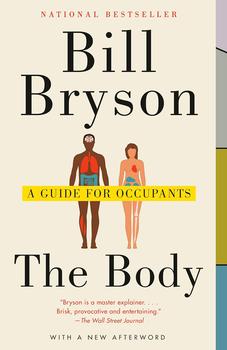Summary | Excerpt | Reviews | Beyond the Book | Readalikes | Genres & Themes | Author Bio

Critics' Opinion:
Readers' Opinion:
First Published:
Oct 2019, 464 pages
Paperback:
Jan 2021, 464 pages
 Book Reviewed by:
Book Reviewed by:
Kim Kovacs
Buy This Book
Heart disease is now such a common complaint that it is a little surprising to learn that it is largely a modern preoccupation. Until the 1940s, the principal focus of health care was with conquering infectious diseases like diphtheria, typhoid fever, and tuberculosis. Only after many of those were cleared out of the way did it become evident that we had another, growing epidemic on our hands in the form of cardiovascular disease. The triggering event for public awareness seems to have been the death of Franklin Delano Roosevelt. In early 1945, his blood pressure soared to 300/190, and it was clear that this was not a sign of vigor but quite the opposite. When he died soon afterward, aged just sixty- three, the world seemed suddenly to realize that heart disease had become a serious and widespread problem and that it was time to try to do something about it.
The result was the celebrated Framingham Heart Study, conducted in the town of Framingham, Massachusetts, just west of Boston. Starting in the autumn of 1948, the Framingham study recruited five thousand local adults and followed them carefully for the rest of their lives. Though the study has been criticized for being almost entirely composed of white people (a deficiency since corrected), it did at least include women, which was unusually farsighted for the time, particularly because women were not thought to suffer unduly from heart problems then. The study is now in its third generation of volunteers. The idea from the outset was to determine the factors that led some people to have heart problems and others to escape them. It was thanks to the Framingham study that most of the major risks for heart disease were identified or confirmed—diabetes, smoking, obesity, poor diet, chronic indolence, and so on. In fact, the term "risk factor" is said to have been coined in Framingham.
The twentieth century could with some justification be called the Century of the Heart, for no other area of medicine experienced more rapid and revolutionary technical progress. In a single lifetime, we have gone from barely being able to touch a beating heart to operating on them routinely. As with any complicated and risky medical pro-cedure, it took years of patient work by lots of people to perfect the techniques and devise the apparatus to make it all possible. The dar-ing and personal risk that some researchers took on is sometimes quite extraordinary. Consider the case of Werner Forssmann. In 1929, Forssmann was a young, newly qualified doctor working in a hospital near Berlin when he became curious to know if it would be possible to gain direct access to the heart by means of a catheter. Without any idea what the consequences would be, he fed a catheter into an artery in his arm and cautiously pushed it up toward his shoulder and on into his chest until it reached his heart, which, he was gratified to discover, didn't go into arrest when a foreign object invaded it. Then, realizing he needed proof of what he had done, Forssmann walked to the hospital's radiology department, on another floor of the building, and had himself X- rayed to show the shadowy and startling image of the catheter in situ in his heart. Forssmann's procedure would eventu-ally revolutionize heart surgery, but it attracted almost no attention at the time, largely because he reported it in a minor journal. Forssmann would be a rather more sympathetic figure except that he was an early and ardent supporter of the Nazi Party and the National Socialist German Physicians' League, which was behind the purging of Jews in the quest for German racial purity. It's not entirely clear how much personal evil he engaged in during the Holocaust, but at the very least he was philosophically despicable. After the war, partly to escape retri-bution, Forssmann worked in obscurity as a family physician in a small town in the Black Forest. He would have been forgotten altogether in the wider world except that two academics from Columbia University in New York, Dickinson Richards and André Cournand, whose work was directly reliant on Forssmann's original breakthrough, tracked him down and publicized his contribution to cardiology. In 1956, all three men were awarded the Nobel Prize in Physiology or Medicine.
Excerpted from The Body by Bill Bryson. Copyright © 2019 by Bill Bryson. All rights reserved. No part of this excerpt may be reproduced or reprinted without permission in writing from the publisher.





The Flower Sisters
by Michelle Collins Anderson
From the new Fannie Flagg of the Ozarks, a richly-woven story of family, forgiveness, and reinvention.

The House on Biscayne Bay
by Chanel Cleeton
As death stalks a gothic mansion in Miami, the lives of two women intertwine as the past and present collide.

The Funeral Cryer by Wenyan Lu
Debut novelist Wenyan Lu brings us this witty yet profound story about one woman's midlife reawakening in contemporary rural China.
Your guide toexceptional books
BookBrowse seeks out and recommends the best in contemporary fiction and nonfiction—books that not only engage and entertain but also deepen our understanding of ourselves and the world around us.